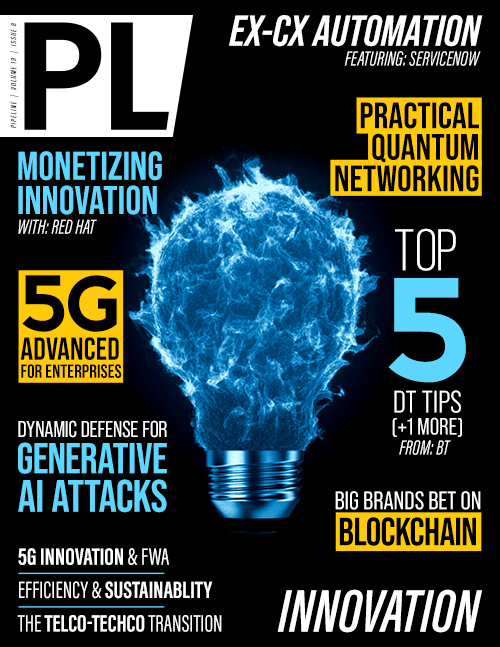Six Tips for Leaders on a
Digital Transformation Journey
Focusing on innovation
The fifth theme is all about innovation and making sure that innovation isn't driven from just one sole tenet. This may sound obvious, but we see it all the time—especially in heavily siloed organizations. Digital transformation requires that the whole organization think as a team: How can we innovate? How can we do that end-to-end? How do we make sure that we start at the beginning and finish at the end? How do we make sure the transformations and changes we’re making are widely accessible?
For example, DevOps teams need to proactively reach out to understand the requirements of the marketing team. Marketing teams need to understand how what they do ultimately impacts networking and so on. Innovation doesn’t occur in a silo.
Furthermore, organizations need to make sure they are putting data at the heart of any innovation and monetizing that or operationalizing it to add value to customers. Some operations may need to be modified so that analyzing data is a normal part of making and executing quality and impactful decisions.
Sustainability and ESG
The last key theme, which merits even deeper consideration, is sustainability. It’s becoming more mainstream that a major corporate priority and mechanism for change is environmental, social, and corporate governance (ESG). The sustainability portion of ESG deserves major prioritization. Sustainability needs to be at the center of digital transformation and adopting new tech or ways to operate. It's all about how we start to drive adoption and how to get the understanding out there of what is possible and why it matters right now. When we're designing new technology, we must think: How do we design it so it is sustainable end-to-end? For example, if an organization is introducing new technology—be it hardware or software—the question should be: If we run the business like this end-to-end, what are the measurable improvements? This is where the cloud deserves hyper-focus because you don't want to think on a micro level and create lots of little data centers everywhere. Rather, you want to think macro and use big, centralized data centers that are optimized and more efficient wherever possible. When security concerns or other restrictions make that impossible, it’s key to use hybrid cloud solutions—ideally shared ones—which are private, to complement public usage. There are lots of things we need to do to replace technology so it consumes less power as well.
From a sustainability perspective, it's all about how we manage end-of-life usage and equipment. It's all about how we recycle it and how we make it easier for people to package it back up and send it back where organizations can strip out the components, and then reuse what's available in new technology and transform that going forward. The best organizations have adopted some of these techniques to improve their sustainability efforts.
Conclusion
These six powerful themes consistently arise when I speak with BT customers, and they hit all lines of efficiency and effectiveness—they also impact the culture and people within an organization.
They impact how leaders lead, how companies innovate, and how they view sustainability. Successful organizations don't do things in isolation; rather, they rearchitect all of these elements
together and then they deliver in a specific way and order, which lays the foundation for lasting transformation.



















